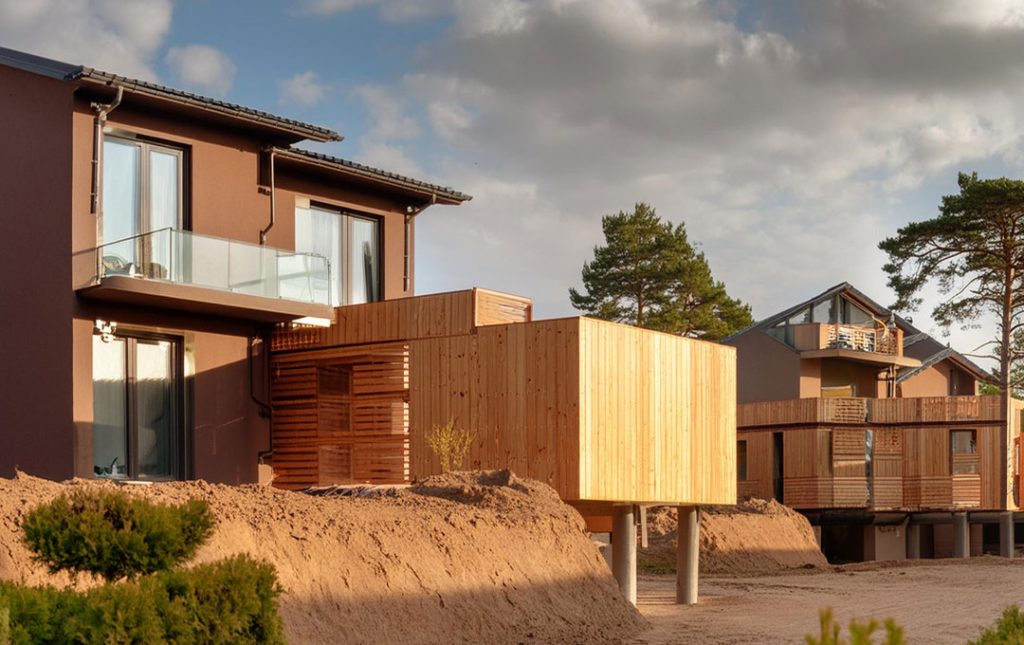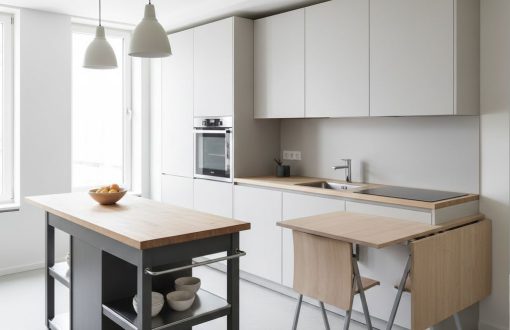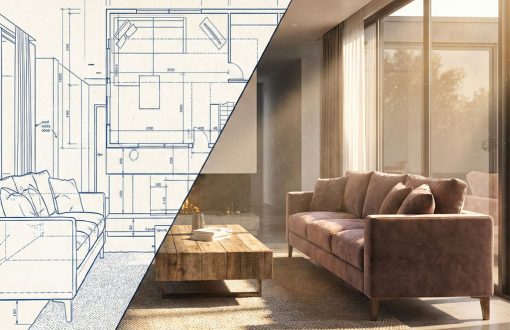Ultimate Guide to Designing a 3 Bedroom Flat on a Half Plot

Ultimate Guide to Designing a 3 Bedroom Flat on a Half Plot
Designing a three-bedroom flat on a half plot of land presents a unique set of challenges and opportunities. With limited space, it requires thoughtful planning and innovative design solutions to ensure every square foot is utilized effectively. The process involves balancing functionality, aesthetics, and comfort to create a living space that meets the needs of its occupants while maximizing the available area.
 In many urban areas, the availability of large plots of land is becoming increasingly rare, making smaller plots more common. This trend necessitates the need for architects and homeowners to think creatively about how to make the most of limited space. A half plot typically refers to a parcel of land that is about half the size of a standard residential plot, often measuring around 25 feet by 50 feet or similar dimensions depending on regional standards. Despite the smaller size, a well-designed three-bedroom flat can offer ample living space through strategic planning and design.
In many urban areas, the availability of large plots of land is becoming increasingly rare, making smaller plots more common. This trend necessitates the need for architects and homeowners to think creatively about how to make the most of limited space. A half plot typically refers to a parcel of land that is about half the size of a standard residential plot, often measuring around 25 feet by 50 feet or similar dimensions depending on regional standards. Despite the smaller size, a well-designed three-bedroom flat can offer ample living space through strategic planning and design.
The key to success lies in understanding the plot’s dimensions and adhering to local building regulations, which can significantly influence the design possibilities. Budgeting is another crucial factor, as it helps to set realistic expectations and guide the project from conception through to completion. Additionally, considering the lifestyle and specific needs of the future occupants ensures that the space is not only functional but also comfortable and tailored to their daily routines.
Environmental considerations also play a vital role in modern house design. Incorporating sustainable practices, such as optimizing natural light and ventilation, using eco-friendly materials, and creating energy-efficient systems, can enhance the livability of the flat while contributing to long-term cost savings. These elements, combined with effective space optimization techniques, can transform a half plot into a spacious, stylish, and functional home.
In this guide, we will explore the essential considerations, innovative space optimization techniques, and practical design tips that can help you maximize the potential of a half plot. Whether you are starting from scratch or renovating an existing structure, these insights will help you create a three-bedroom flat that is both beautiful and efficient. From open-plan living areas to smart storage solutions, we will cover all aspects of design to ensure your project is a resounding success.
Key Considerations for Designing a 3-Bedroom Flat on a Half Plot
 Designing a three-bedroom flat on a half plot of land requires meticulous planning and a thorough understanding of various critical factors. These key considerations ensure the successful utilization of space while maintaining functionality and aesthetic appeal. Below are detailed discussions on each of these considerations:
Designing a three-bedroom flat on a half plot of land requires meticulous planning and a thorough understanding of various critical factors. These key considerations ensure the successful utilization of space while maintaining functionality and aesthetic appeal. Below are detailed discussions on each of these considerations:
1. Understanding the Plot Dimensions and Local Building Regulations
Before embarking on the design process, it is essential to have a precise understanding of the plot dimensions. A half plot typically measures around 25 feet by 50 feet, but this can vary depending on regional standards. Accurate measurements are crucial as they determine the boundaries within which you can design and build.
Equally important is familiarity with local building regulations. These regulations govern aspects such as setbacks, which are the minimum distances required between the building and the plot boundaries, as well as the maximum allowable building height and floor area ratio (FAR). Non-compliance with these regulations can lead to legal issues, fines, and even the need to alter or demolish parts of the construction. Therefore, consulting with local authorities or a professional architect who understands these rules is advisable.
2. Budgeting and Cost Estimation
A well-planned budget is the backbone of any successful construction project. Begin by estimating the total cost, which includes land acquisition, design fees, construction costs, permits, and finishing expenses such as interior décor and landscaping. Having a detailed budget helps in managing finances effectively and prevents cost overruns.
During the budgeting phase, it’s also wise to allocate a contingency fund, typically around 10-15% of the total budget, to cover unexpected expenses. Obtaining multiple quotes from contractors and suppliers ensures competitive pricing and helps in making informed financial decisions. By maintaining a clear budget and regularly monitoring expenditures, you can keep the project on track financially.
3. Lifestyle and Needs Analysis
Understanding the lifestyle and specific needs of the future occupants is critical in the design process. A three-bedroom flat can accommodate various types of residents, such as a family with children, a couple needing extra space for guests or a home office, or individuals sharing a living space. Each of these scenarios demands a different design approach.
For instance, a family might require larger communal areas and child-friendly spaces, while a couple might prioritize privacy and luxury finishes. Identifying these needs early in the design process ensures that the flat is tailored to its occupants, enhancing their comfort and satisfaction. Engaging with the future residents to gather their preferences and requirements can provide valuable insights that shape the design.
4. Environmental Considerations
Incorporating environmental sustainability into the design is not only beneficial for the planet but also enhances the quality of living and can reduce long-term costs. Key aspects include optimizing natural light and ventilation to reduce reliance on artificial lighting and air conditioning. This can be achieved through strategic placement of windows, skylights, and ventilation systems.
Using eco-friendly materials such as recycled or locally sourced building materials can lower the environmental impact of the construction. Additionally, integrating energy-efficient systems, such as solar panels and energy-saving appliances, can further contribute to sustainability. Landscaping with native plants that require minimal water and maintenance is another effective strategy. These practices not only contribute to a healthier living environment but also align with modern green building standards, potentially increasing the property’s value.
Space Optimization Techniques for Designing a 3-Bedroom Flat on a Half Plot
 When working with a limited space such as a half plot, maximizing every square foot becomes essential. Effective space optimization techniques ensure that the flat remains functional, comfortable, and aesthetically pleasing. Below, we delve into various strategies to optimize space in a three-bedroom flat on a half plot.
When working with a limited space such as a half plot, maximizing every square foot becomes essential. Effective space optimization techniques ensure that the flat remains functional, comfortable, and aesthetically pleasing. Below, we delve into various strategies to optimize space in a three-bedroom flat on a half plot.
1. Open Plan Living
An open plan layout is a popular space-saving strategy that eliminates unnecessary walls, creating a sense of spaciousness and flexibility. By combining the living room, dining area, and kitchen into a single, large open space, you can make the flat feel more extensive than it actually is.
This approach not only enhances visual continuity but also allows for flexible furniture arrangements. For instance, a dining table can serve as a workstation or an additional prep area for the kitchen when needed. Moreover, an open plan design improves natural light distribution, making the space brighter and more inviting. Using cohesive design elements such as consistent flooring and color schemes can further unify the space and enhance the open plan’s effectiveness.
2. Vertical Space Utilization
Making full use of vertical space is crucial in a limited area. High ceilings can create an illusion of more space and provide opportunities for additional storage. Install tall, built-in storage units that extend to the ceiling to take advantage of vertical space without occupying valuable floor area.
Incorporating mezzanines or loft spaces can add functional square footage without expanding the building’s footprint. For example, a mezzanine above the living area can serve as a home office, guest room, or reading nook. Additionally, consider using vertical space in the kitchen with tall cabinets and hanging racks for utensils and cookware. In bedrooms, bunk beds or loft beds with built-in desks or storage underneath can significantly increase usable space.
3. Multipurpose Furniture
Investing in multipurpose furniture is a smart way to make the most of limited space. Furniture that serves dual or multiple functions can reduce clutter and free up space for other uses. For example, a sofa bed in the living room can function as seating during the day and a bed at night, making it ideal for hosting guests.
Dining tables with built-in storage or foldable extensions can be expanded when needed and tucked away to save space. Ottomans with hidden storage can be used as seating, footrests, or tables. Murphy beds that fold into the wall when not in use can transform a bedroom into a study or playroom. Such multifunctional furniture pieces are essential in maximizing the utility of each room.
4. Efficient Room Layouts
Strategically planning the layout of each room is vital for efficient space utilization. In bedrooms, opt for built-in wardrobes and under-bed storage solutions to keep belongings organized without taking up extra floor space. Corner wardrobes or sliding door closets can also help save space.
In the kitchen, use space-saving designs like galley kitchens or L-shaped layouts, which allow for maximum use of limited space while maintaining functionality. Install pull-out shelves, lazy Susan’s, and corner drawers to make full use of cabinets and avoid wasted space. In bathrooms, consider wall-mounted sinks and toilets, which free up floor space and create a more open feel.
5. Outdoor Space Integration
Integrating outdoor spaces such as balconies, terraces, or small gardens can extend the living area and provide additional space for relaxation and entertainment. Even a small balcony can be transformed into a cozy outdoor retreat with seating, plants, and lighting.
Glass doors or large windows opening onto the outdoor area can blur the boundaries between indoor and outdoor spaces, making the flat feel larger and more connected to the environment. Use the outdoor space for dining, reading, or gardening to enhance the overall living experience without requiring additional plot area.
Design Tips for Maximizing a 3-Bedroom Flat on a Half Plot
 Creating a three-bedroom flat on a half plot requires not only strategic space optimization but also thoughtful design to ensure the space is both functional and visually appealing. Here are some detailed design tips to help you achieve the best results.
Creating a three-bedroom flat on a half plot requires not only strategic space optimization but also thoughtful design to ensure the space is both functional and visually appealing. Here are some detailed design tips to help you achieve the best results.
1. Natural Light and Ventilation
Maximizing natural light and ventilation is crucial in small spaces as it enhances the sense of openness and airiness. Large windows, glass doors, and skylights can bring in ample natural light, making rooms feel more spacious and inviting. Position windows to take advantage of the best light throughout the day and to facilitate cross-ventilation, which helps maintain a comfortable indoor environment.
For rooms that don’t have direct access to exterior walls, consider using internal windows or glass partitions to borrow light from adjacent rooms. Light-colored walls and reflective surfaces like mirrors can also help bounce light around the room, further brightening the space.
2. Color Schemes
The right color scheme can significantly impact the perception of space. Light and neutral colors such as whites, beiges, and soft pastels can make a room feel larger and more open. These colors reflect more light, enhancing the natural brightness of the space.
To add personality without overwhelming the room, use accent colors in moderation. An accent wall, colorful decor, or vibrant furniture pieces can introduce interest and contrast. Stick to a cohesive color palette throughout the flat to create a harmonious and seamless look. Bold colors can be used for smaller accessories or artwork to add pops of color without dominating the space.
3. Smart Storage Solutions
Effective storage solutions are essential in a small flat to keep the space organized and clutter-free. Built-in storage options, such as floor-to-ceiling wardrobes, kitchen cabinets, and under-bed drawers, make the most of every available inch. Use custom cabinetry to fit unusual spaces and ensure that every nook and cranny is utilized.
Consider multifunctional furniture with hidden storage, like ottomans, coffee tables with compartments, and benches with lift-up seats. In the kitchen, maximize storage with pull-out shelves, lazy Susan’s, and vertical racks. For bathrooms, wall-mounted cabinets, medicine cabinets with mirrors, and recessed shelving can provide storage without taking up floor space.
4. Cohesive Design Theme
Maintaining a cohesive design theme throughout the flat creates a sense of unity and flow, making the space feel larger and more organized. Choose a consistent style for furniture, décor, and fixtures, whether it’s modern, minimalist, Scandinavian, or another aesthetic.
A unified color palette, similar materials, and complementary textures can tie different areas together. For instance, if you use wood accents in the living room, carry that through to the bedrooms and kitchen. Consistency in design helps avoid a fragmented look and makes the flat feel more cohesive and thoughtfully designed.
5. Landscaping and Curb Appeal
Even on a half plot, the exterior of the flat plays a significant role in the overall appeal of the property. Simple landscaping, such as a well-maintained lawn, potted plants, and a small garden area, can enhance the curb appeal and provide a pleasant outdoor space.
Consider using vertical gardens or trellises with climbing plants to add greenery without taking up horizontal space. A welcoming entrance with a stylish door, good lighting, and clean pathways can make a great first impression. Outdoor seating areas, even if small, can extend the living space and provide a relaxing retreat.
6. Privacy Considerations
Ensuring privacy in a small space can be challenging but is essential for comfort and functionality. Use strategic placement of windows and doors to minimize direct views into private areas from public spaces. Frosted glass, sheer curtains, or blinds can provide privacy while still allowing light to filter through.
For interior privacy, consider using sliding doors or room dividers that can be closed when needed and opened to create a larger space. Soundproofing materials, such as thick carpets, curtains, and insulated walls, can help reduce noise between rooms, enhancing privacy and comfort.
In conclusion
Designing a three-bedroom flat on a half plot requires a blend of strategic planning, creative space utilization, and thoughtful design. By understanding plot dimensions and adhering to local building regulations, you lay the groundwork for a feasible and compliant project. A well-defined budget and a clear analysis of the occupants’ lifestyle and needs ensure the space is both functional and financially viable.
Employing effective space optimization techniques, such as open plan living, vertical space utilization, multipurpose furniture, and efficient room layouts, maximizes every inch of available space. Integrating outdoor spaces further extends the living area, enhancing both functionality and aesthetic appeal.
Incorporating key design tips—such as maximizing natural light and ventilation, using cohesive color schemes, incorporating smart storage solutions, maintaining a unified design theme, enhancing landscaping and curb appeal, and ensuring privacy—creates a harmonious and comfortable living environment. These elements not only make the flat feel larger and more inviting but also improve the overall quality of life for its occupants.
The successful design of a three-bedroom flat on a half plot hinges on meticulous planning, innovative space-saving strategies, and thoughtful design choices. By focusing on these principles, you can transform a limited space into a stylish, efficient, and comfortable home that meets the needs of its residents and makes the most of every square foot.




